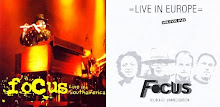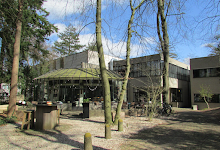Archive number: 47
Title: Glider
Main Album: Ship of Memories
Track number: 5
Genre: Progressive Rock Instrumental
Studio: Decca Studios, Hollywood, Los Angeles, California (later Studio 55)
Length: 4' 34”
Composer: Jan Akkerman
Musicians: Jan Akkerman - Electric Sitar, Drum machine; Thijs van Leer – Piano, Mellotron, Voice; Bert Ruiter – Bass; David Kemper – Drums
Producer: Focus
Engineer: Mike Butcher or Eric Prestidge?
Label: LP – EMI, Harvest, Sire CD – EMI-Bovema, IRS, Red Bullet, JVC
Alternative version: This is an earlier abandoned version of the track Mother Focus
Date of recording/release: 1975. Not released until 1977 (LP). CD – 1988, 1993, 2001, 2006.
Notes: Using the basic elements found in Sylvia and other tracks an attempt is made here (the title and sound would suggest) to create an atmosphere and even a particular scenario. First we have the early morning arrival at an airfield and preparations for a flight (00:00-00:51). No doubt the use of the drum machine was intended to create a mechanical atmosphere. Akkerman's sitar early on also reminds one of some sort of crankshaft or winch. There are shouts and sneezes from van Leer too. A croaking sound from van Leer announces lift off and eventually the glider is set free (01:22) to joyfully glide through the air. This is represented by van Leer's voice at first but from 01:49 Akkerman's sitar takes up the representative role, including rolling falls (eg 02:15-02:19). At 02:49 van Leer's voice comes in again. The sitar comes back in though and at 03:32-03:35 we have another rolling fall before the fade.
A note on the electric sitar (from Wikipedia)
A kind of electric guitar designed to mimic the sound of the traditional South Asian instrument. Depending on manufacturer and model, these instruments bear varying degrees of resemblance to the traditional sitar. Most, in fact, resemble the guitar in the style of the body and headstock, though some have a body shaped to resemble that of a sitar. The instrument was developed in the late sixties when many western musical groups began to use sitar. The sitar is generally considered a difficult instrument to learn. By contrast, the electric sitar, with its standard guitar fretboard and tuning, is easy for a guitarist to play. In addition to the six playing strings, most electric sitars have sympathetic strings, typically located on the left side of the instrument (though some do not have these). These strings have their own pickups and are usually tuned with a harp wrench (a difficult process). A unique type of bridge, a "buzz bridge" (developed by session musician Vincent Bell), helps give the instrument its distinctive sound. Some electric sitars have drone strings in lieu of sympathetic strings. A few models, such as the Jerry Jones "Baby" sitar, lack both, while still retaining the distinctive buzz bridge. Vinnie Bell used the instrument on several songs, including "Green Tambourine" (the Lemon Pipers) and "Band of Gold" (Freda Payne). Because the tone quality and playing technique differ significantly from that of the sitar, it is not used by classical musicians, but typically by rock, jazz, fusion, progressive rock and other pop music groups. Eg Santana, Rory Gallagher, etc. Versions of electric sitar were also developed both in India and Pakistan. These are smaller, look like a sitar and are tuned the same way as the original classical sitar.
Akkerman bought a Coral electric sitar, manufactured by the Danelectro company, in the USA in 1973. (These first appeared in stores at the end of 1967. Danelectro ceased trading the following year. Consequently, prices of second-hand examples began to spiral).





















No comments:
Post a Comment